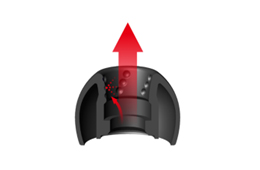SilverEars
Headphoneus Supremus
- Joined
- Sep 18, 2013
- Posts
- 14,571
- Likes
- 6,549
On one of the threads, I ran into this product from japan for an iem. It has dots in the canal of the tip and described as below(google translation). What's the benefit of it what would it do to the sound? I looked up something similar online, and all I see is diffusers for room treatment. Any parallel to that?
It comes with the newly developed "spiral dot earpiece" to achieve a clear sound
It comes to suppress the turbidity of the sound is diffused in the dimples provided in the earpiece inner wall the reflected sound of the earpiece that is the cause of the deterioration in sound quality, to achieve a clear sound the "spiral dot earpiece". Foam earpiece to fit in the ear with a soft touch is also included.
Silicon earpiece
Earpiece sectional view


